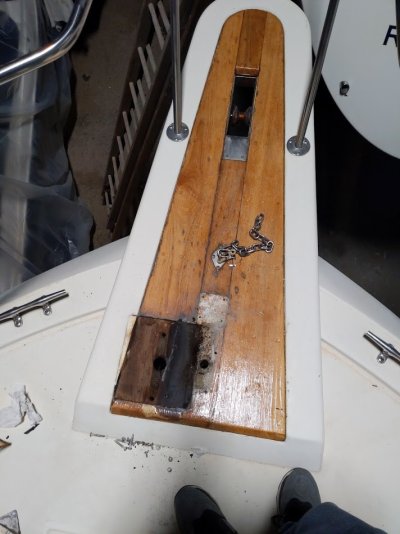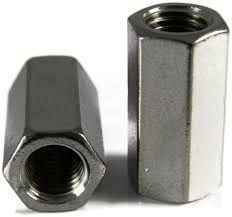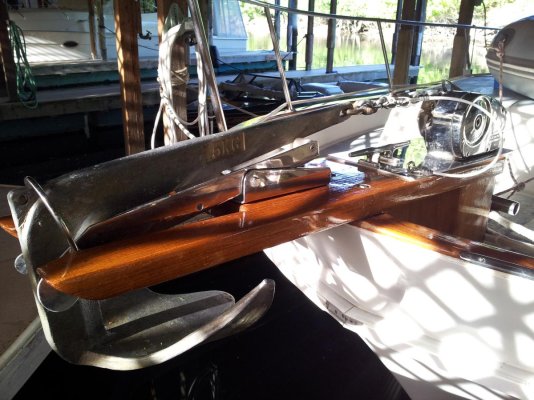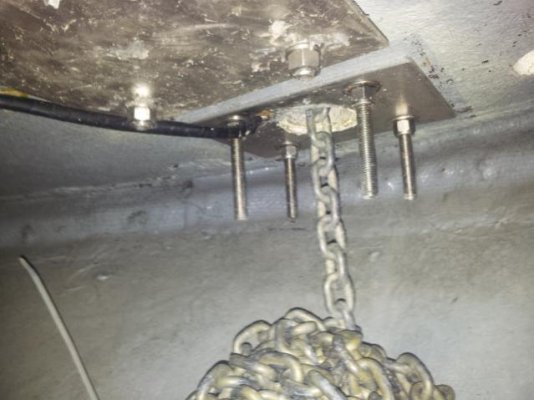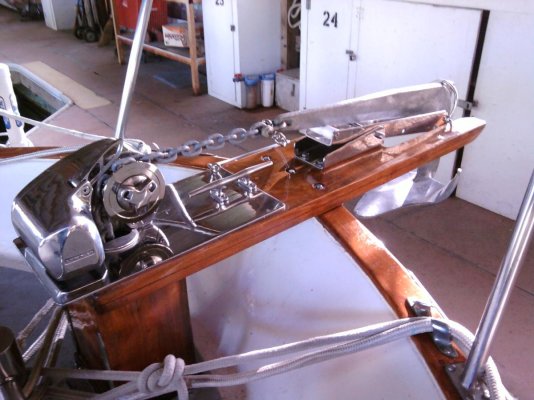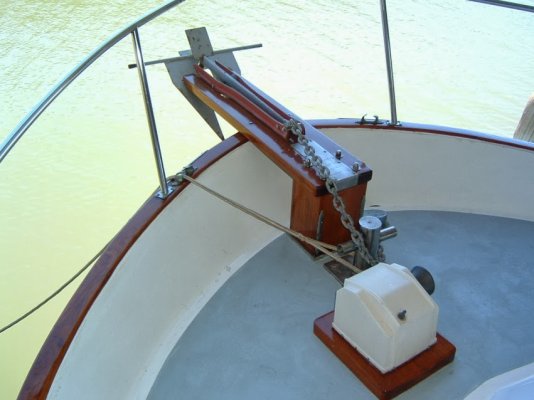rslifkin
Guru
- Joined
- Aug 20, 2019
- Messages
- 7,584
- Location
- USA
- Vessel Name
- Hour Glass
- Vessel Make
- Chris Craft 381 Catalina
I'm currently in the process of re-doing my ground tackle this winter. Old windlass is off the boat, etc. New Maxwell HRC10-8 in the garage waiting for install. But now I've got a few details to figure out. I need to install a cleat or bollard of some form as a point to secure the anchor rode.
This cleat / bollard will mount on top of the pulpit, which gives me an issue with just using a big cleat. All of the suitable size cleats I've looked at that match my existing ones use 5/16" bolts. The pulpit plus reinforced section of deck under it is just under 7 inches thick. Nobody makes a 5/16" bolt that long, it seems, so I'd be forced to mount the cleat just to the pulpit before bolting it back onto the boat (it'll be removed for part of the re-work).
So I'm thinking, what about a samson post / bollard like this? https://www.defender.com/product3.jsp?name=white-water-marine-large-mooring-bitt&path=-1|2259971|2259988&id=3707393
It would be mounted on top of the pulpit, so going through a 1/2" layer of teak, some fiberglass, more wood, then a 2-ish inch thick section of deck (there's a thick layer of extra coring under the pulpit area) with a large backing plate. I'd expect that kind of mounting thickness would be sufficient to handle the increased leverage from the line attaching to a bollard higher off the deck. That bollard mounts with 1/2" bolts, which I can easily get in 8 inch length, allowing it to mount all the way through (which the windlass also will in addition to the other bolts holding the pulpit to the deck).
What does everyone think would be the better solution? Keep in mind, this setup is only for anchoring, not dock lines. There are already a pair of cleats outboard of the pulpit for dock lines. A picture of the pulpit with the old windlass removed is attached for reference.
This cleat / bollard will mount on top of the pulpit, which gives me an issue with just using a big cleat. All of the suitable size cleats I've looked at that match my existing ones use 5/16" bolts. The pulpit plus reinforced section of deck under it is just under 7 inches thick. Nobody makes a 5/16" bolt that long, it seems, so I'd be forced to mount the cleat just to the pulpit before bolting it back onto the boat (it'll be removed for part of the re-work).
So I'm thinking, what about a samson post / bollard like this? https://www.defender.com/product3.jsp?name=white-water-marine-large-mooring-bitt&path=-1|2259971|2259988&id=3707393
It would be mounted on top of the pulpit, so going through a 1/2" layer of teak, some fiberglass, more wood, then a 2-ish inch thick section of deck (there's a thick layer of extra coring under the pulpit area) with a large backing plate. I'd expect that kind of mounting thickness would be sufficient to handle the increased leverage from the line attaching to a bollard higher off the deck. That bollard mounts with 1/2" bolts, which I can easily get in 8 inch length, allowing it to mount all the way through (which the windlass also will in addition to the other bolts holding the pulpit to the deck).
What does everyone think would be the better solution? Keep in mind, this setup is only for anchoring, not dock lines. There are already a pair of cleats outboard of the pulpit for dock lines. A picture of the pulpit with the old windlass removed is attached for reference.

